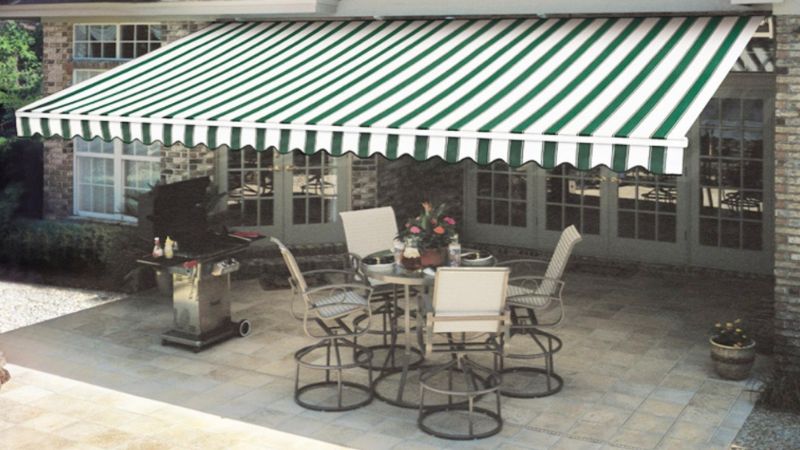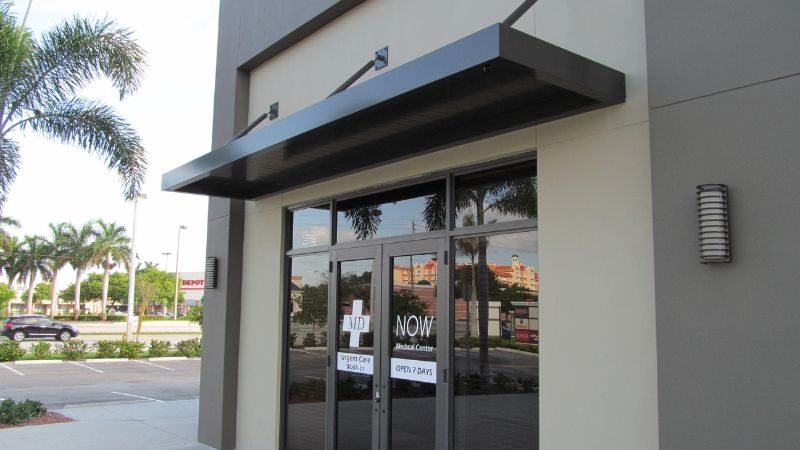Awnings are a great addition to any home or business, providing shade, enhancing curb appeal, and protecting outdoor spaces from the elements. However, over time, exposure to sun, wind, and rain can cause wear and tear. To keep your awning looking brand new, it’s important to practice regular maintenance and care.
In this blog, we’ll explore 10 simple yet effective tips to preserve your awning’s appearance and functionality. Whether your awning is fabric or metal, these tips will help you extend its lifespan, save money on repairs, and keep your outdoor space looking fresh.
10 Tips To Keep Your Awning Looking Brand New
1. Clean Your Awning Regularly
To maintain the appearance and longevity of your awning, regular cleaning is crucial. Dirt, dust, bird droppings, and mildew can accumulate over time, making your awning look old and worn out. Start by removing loose debris with a soft-bristle brush or a broom. Next, use a gentle cleaning solution of mild soap and warm water to wash the surface.
Steer clear of powerful chemicals since they may cause harm to the material or cloth. For stubborn stains, allow the soap to sit for a few minutes before gently scrubbing. Rinse the awning thoroughly to remove all soap residues. Cleaning your awning at least twice a year will prevent buildup and keep it looking fresh and new.
Also Read:- How To Protect Awnings From Sun Damage
2. Inspect for Damage Regularly
Routine inspections are essential to catch any small issues before they turn into costly repairs. Look for signs of wear and tear, such as frayed edges, rust on metal parts, or mold on fabric awnings. Pay close attention to the seams and stitching, as these areas are often the first to show signs of damage.
If you spot any minor issues, address them immediately to prevent them from worsening. For example, patch small tears with fabric repair kits or apply rust inhibitors to metal parts. Regular inspections, ideally every three to four months, will help you catch potential problems early and ensure your awning remains in top condition.
3. Protect Your Awning from Harsh Weather
Your awning is constantly exposed to the elements, and harsh weather conditions like heavy rain, strong winds, or snow can cause significant damage. To keep your awning in excellent shape, retract it during storms, high winds, or when you’re not using it.
If your awning is not retractable, consider adding an awning cover or shield to protect it from extreme weather. Regularly removing accumulated snow or water can also prevent sagging or tearing. By safeguarding your awning during harsh weather conditions, you can extend its lifespan and prevent costly repairs.
4. Keep the Frame in Good Condition
The frame of your awning plays a vital role in its overall durability. Regularly inspect the frame for signs of rust, corrosion, or any structural weakness. Metal frames can rust over time, especially if they are exposed to moisture, so it’s important to treat them with a rust-resistant coating.
Tighten any loose screws, bolts, or fasteners to ensure the frame remains sturdy. If you notice any bent or broken parts, repair or replace them immediately to avoid further damage. Proper frame maintenance not only keeps your awning looking new but also ensures it remains stable and secure.
5. Avoid Excessive Weight on the Awning
Your awning is designed to provide shade and protection, but it’s not built to support heavy loads. Placing excessive weight on your awning, whether it’s from heavy objects, furniture, or even hanging plants, can strain the fabric or material, leading to sagging or tears.
This is especially true for fabric awnings, which can easily become overstretched under pressure. Additionally, avoid allowing snow or rainwater to accumulate on the awning, as the added weight can cause sagging and structural damage. Regularly remove any debris, and be mindful of what you place on or near your awning to prevent undue strain.
6. Retract When Not in Use
If you have a retractable awning, make a habit of retracting it when it’s not in use. Leaving your awning extended for long periods, especially when it’s exposed to harsh sunlight, wind, or rain, can speed up wear and tear.
By retracting your awning when it’s not needed, you can protect it from the elements and extend its lifespan. This simple habit also reduces the chances of accidents, such as birds nesting or debris accumulating on the surface. A retracted awning remains cleaner, more durable, and requires less maintenance over time.
7. Apply a Protective Sealant
Applying a protective sealant or waterproof coating to your awning can significantly improve its durability. For fabric awnings, a UV-protective sealant helps prevent fading, discoloration, and damage from prolonged sun exposure. For metal or vinyl awnings, applying a water-resistant coating can protect the surface from corrosion and rust.
These sealants also make the surface easier to clean by repelling dirt, dust, and mildew. Be sure to follow the manufacturer’s instructions when applying a sealant and reapply as recommended to maintain protection. Using the right protective products can keep your awning looking brand new for years to come.
8. Store Your Awning During Off-Seasons
If you live in an area with harsh winters or extended periods of bad weather, consider storing your awning during off-seasons. Detachable awnings can be removed and stored indoors in a dry, sheltered space to prevent exposure to snow, ice, or heavy rains.
Even retractable awnings should be stored properly when not in use for extended periods. Before storing, ensure that your awning is thoroughly cleaned and dried to prevent mold and mildew growth. Proper storage during the off-season can significantly extend the lifespan of your awning by protecting it from environmental damage.
9. Handle with Care During Installation and Removal
Proper handling of your awning during installation and removal is critical for maintaining its integrity. Whether you’re setting up your awning for the first time or removing it for cleaning or storage, ensure that all steps are done carefully.
Avoid pulling or tugging too hard on the fabric, as this can cause tears or stretching. If your awning has a motorized system, ensure it is functioning smoothly, as sudden jerks can lead to mechanical issues. If possible, seek professional help for installation or removal to avoid mishandling and to ensure that all components are securely in place.
Also Read:- How To Clean Grease Stains From Awnings
10. Schedule Professional Maintenance
While regular cleaning and inspection can be done at home, scheduling professional maintenance at least once a year is highly recommended. A professional can assess your awning for any hidden issues that you might overlook, such as internal frame problems or deep-seated rust.
They can also perform a thorough cleaning, apply protective coatings, and make necessary repairs that will keep your awning in excellent condition. Investing in professional maintenance ensures that your awning remains safe, functional, and visually appealing for years, saving you from more expensive repairs in the long run.
Conclusion
Awning maintenance doesn’t have to be difficult. By following these 10 simple tips, you can easily protect your investment and keep it looking brand new for years to come. Regular cleaning, timely repairs, and mindful use will not only enhance the appearance but also improve the durability of your awning, ensuring it continues to serve its purpose effectively.
FAQs
How often should I clean my awning?
You should clean your awning at least twice a year, or more frequently if it’s exposed to heavy dirt, debris, or weather.
Can I use a pressure washer to clean my awning?
While pressure washers can be effective, it’s best to avoid high pressure on fabric awnings to prevent damage. Instead, use a light detergent and a delicate brush.



